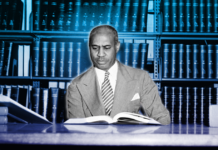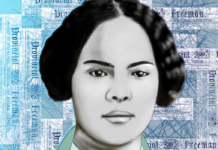In 1990, I was a brand-new teacher in an unusual environment: a Chicago alternative high school where teens and young adults could earn their diplomas after dropping out—really, after being pushed out—of traditional high school. One of the subjects I taught was reading. All four students in my class were male. Three were from Cambodian refugee families; the fourth was a young Black man.
Although I was supposed to be their reading teacher, I knew nothing about teaching reading. I learned on the job from the nearby adult literacy program. Over the course of the year, I learned about the history of African American Vernacular English, English as a second language teaching strategies, and the value of high-interest, teen-relevant beginning reading material. That kind of text was hard to find then, and it’s still hard to find today.
My students experienced some successes. Perhaps the biggest victory was the week we spent reading and discussing Dith Pran’s New York Times article, “Return to the Killing Fields.” Yet, to be quite honest, I didn’t learn nearly enough that year to help them become successful independent readers. I especially didn’t learn enough about how to teach phonics—the art of helping beginning readers connect sounds with letters, especially in English, with its complicated hodgepodge of spelling rules.
Today, to the disgrace of our nation, far too many K-12 teachers are still working with the same knowledge base I had back then about how people learn to read: none. Even worse, most teachers in the U.S. have been indoctrinated into a now-debunked view of how humans learn to read. Though teacher colleges are finally starting to improve, the number of working teachers who have had the benefit of quality reading teaching during their preparation remains small. This means children for whom reading English does not come easily can’t rely on support from their teachers.
Once children start to struggle with reading, it’s rare that they catch up. Most school systems fail to catch struggling readers early enough to make a real impact, in part because quality reading instruction is relegated to expensive special education and districts don’t want to pay for it. Meanwhile, too many educators assume children’s failure to read is rooted in poverty and parenting, not their own instructional blind spots.
In her latest radio documentary, What the Words Say, noted reporter Emily Hanford shows us the devastating consequences of these adult failures on children and young people of color. She asks the question I faced as a beginning teacher: When a teenager can’t sound out words, “is that a learning disability, or was the child never taught how to read?”
“I knew my son had a problem in first grade, when I was coming up to the school every day, telling you that something was wrong, and no one listened.” That’s the story Houston’s Latashia Crenshaw has heard over and over again from the parents of children in the juvenile detention facility where she directs educational support programming.
Lately we’ve heard a lot about how disciplinary practices like suspension and expulsion put kids of color on a pipeline from school to prison. But here’s the other piece of the school-to-prison pipeline: instructional practices like “balanced literacy” and “response to intervention” that don’t teach children what they really need to read well, and then leave them hanging until they are so far behind districts put them in special education for lack of a better way to help.
That’s how kids like DeShaun (not his real name) end up in juvenile detention. That’s where 17-year-old DeShaun first learned that in English, ph can sound like f. That’s also how young people like my friend Jose end up dead at age 20.
In Hanford’s piece, my friend Vesia Hawkins talks about having 50 coffees with well-meaning educators in which they revealed their racist assumptions about why kids can’t read. After hearing so many times from them about parents not reading to their kids (which was untrue) and not hearing any self-reflection about problems with their own teaching practices, Vesia gave up and went to talk with parents themselves.
The fauxgressive professors in teacher education who refuse to learn from advances in cognitive science and prefer to groove endlessly on the importance of “teaching race” would do well to listen to Black parents like Sonya Thomas of Nashville PROPEL. Thomas and other Nashville parents whose children have been harmed by well-meaning educators who knew nothing about the science of reading are doing the real work of racial justice: holding district leaders and school boards accountable for their abject failure to educate Black kids.
It’s time to transform teacher education and make sure no more beginning teachers start their work as ill-equipped as I was to handle the work of teaching reading. Veterans in the field like Robert Pondiscio, and groups like NCTQ, are calling teacher education programs to account for their unwillingness to equip teachers effectively. A new generation of teachers, like Jasmine Lane in Minnesota and Ashley McCall in Chicago, are melding culturally responsive teaching with up-to-date reading instruction.
A growing coalition of parents, teachers and policy wonks now faces the monumental task of shifting the entrenched racist and classist practices of teaching reading that dominate in public schools. Their efforts have been greatly aided by Hanford’s relentless work to expose the hidebound and biased approach to teaching reading that has destroyed so many young lives. There’s an old saying in activist circles: “If you want peace, work for justice.” And in education, if you want justice, the best place to start is by teaching children to read.










